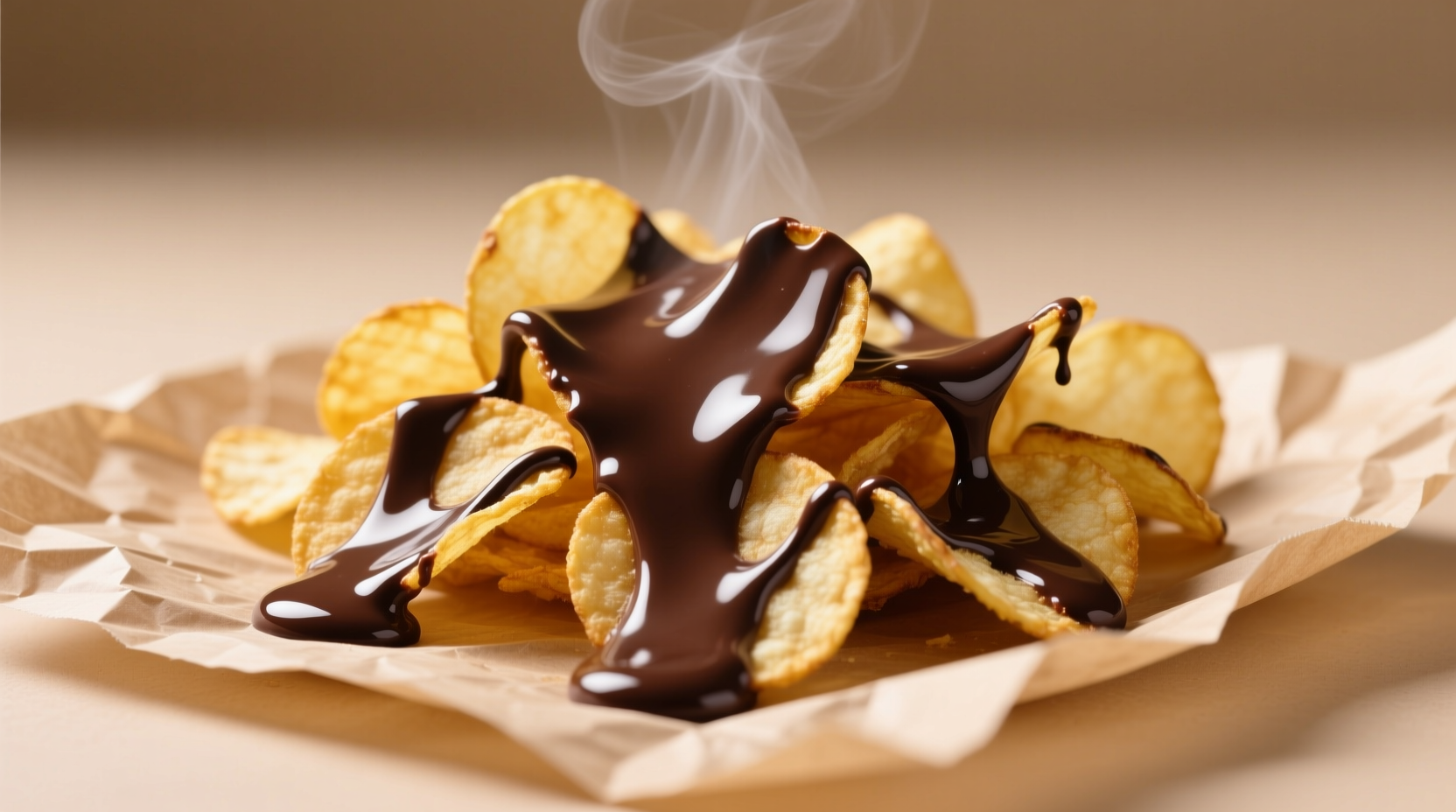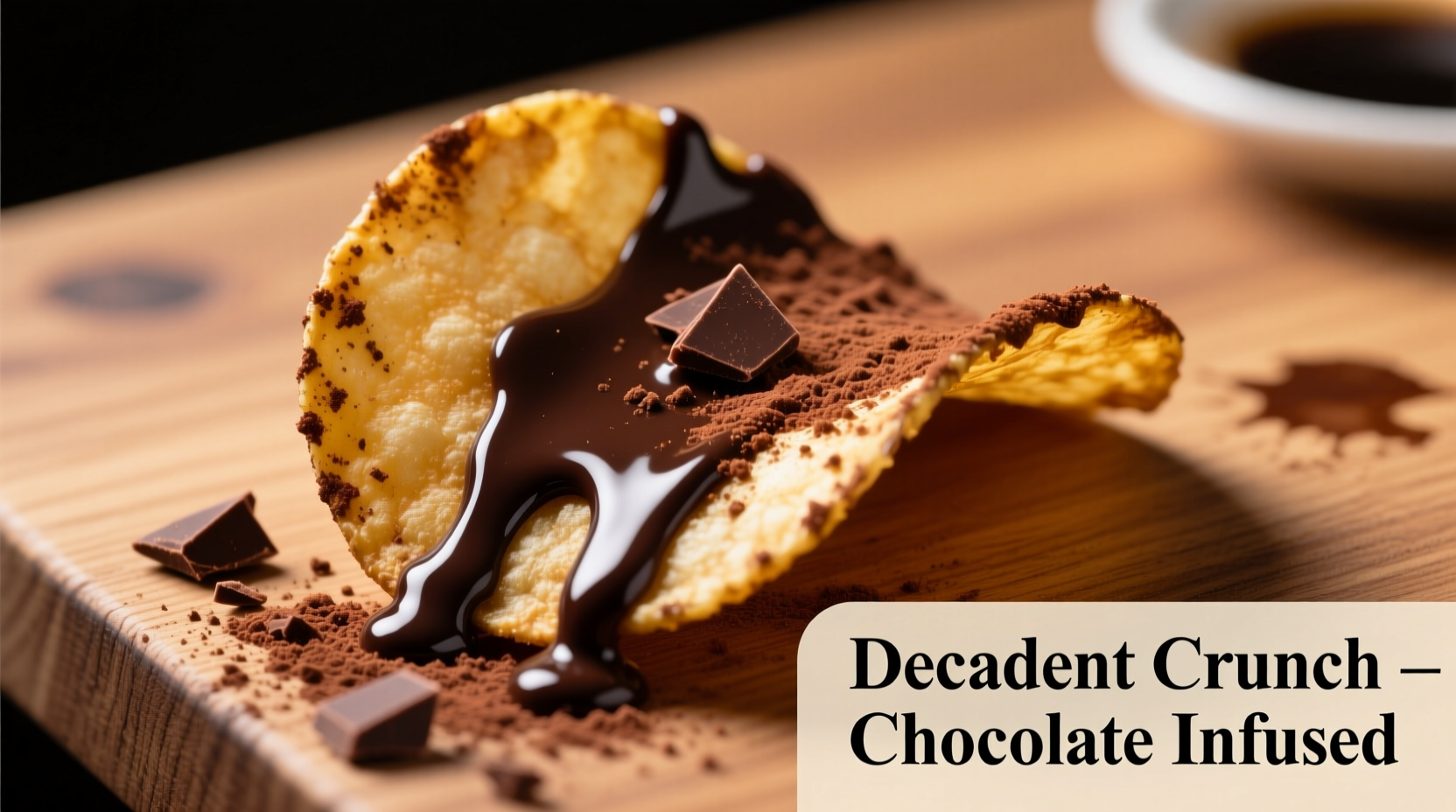Why Chocolate Potato Chips Captivate Our Curiosity
When you search for "chocolate potato chips," you're likely wondering if this bizarre snack actually exists. The truth? Major snack manufacturers don't produce chocolate-dipped potato chips as a standard offering. However, food science explains why this combination intrigues us: our brains are wired to seek both sugar and salt for survival, creating powerful cravings when they combine. Research from the Monell Chemical Senses Center confirms that sweet-savory pairings activate multiple pleasure pathways simultaneously, explaining the viral appeal of unconventional snack experiments.
The Flavor Science Behind Sweet & Salty Pairings
Understanding why chocolate and potato chips seem like a compelling idea requires examining flavor chemistry. Potatoes naturally contain glutamate, which enhances umami perception, while chocolate's theobromine interacts with dopamine receptors. When combined properly, these elements create what food scientists call "flavor layering" - where multiple taste sensations build complexity rather than compete.
| Flavor Component | Found In Potato Chips | Found In Chocolate | Synergistic Effect |
|---|---|---|---|
| Salt | High (1-2%) | Negligible | Enhances sweetness perception by 20-30% |
| Sugar | Negligible | 40-60% | Softens saltiness while maintaining savory notes |
| Umami | Moderate (from potato) | Low (from cocoa) | Creates depth that neither ingredient has alone |
Closest Commercial Alternatives Available Today
While traditional chocolate potato chips remain elusive, several snack innovations come surprisingly close:
- Sweet potato chips with cocoa dusting - Brands like Jackson's Honest offer limited-edition varieties with subtle chocolate notes
- Chocolate-covered potato snacks - Japanese manufacturers produce experimental snacks featuring thin potato wafers dipped in dark chocolate
- Flavored kettle chips - Some artisanal producers create "chocolate chili" varieties using cocoa powder and spices
According to 2024 snack industry data from Mintel, only 3% of global potato chip products incorporate chocolate elements, primarily in Asian markets where sweet-savory combinations are more culturally accepted.

Creating Your Own Chocolate Potato Chip Experience
If you're determined to experience this unusual combination, a controlled DIY approach yields better results than random experimentation. Professional chef techniques reveal three successful methods:
- The Drizzle Method - Melt high-quality dark chocolate (70% cocoa) and lightly drizzle over cooled plain kettle chips. The chocolate sets quickly without making chips soggy.
- The Dusting Technique - Combine cocoa powder with a small amount of sugar and salt, then gently toss with freshly fried chips for subtle flavor enhancement.
- The Layered Approach - Create alternating layers of thin potato crisps and chocolate ganache for a deconstructed chip experience.
Food safety note: Never attempt to dip warm chips in chocolate, as the moisture difference causes immediate sogginess. Always cool chips completely before adding chocolate elements.
Cultural Context of Unusual Flavor Pairings
The concept of chocolate potato chips fits within a broader culinary trend of challenging traditional flavor boundaries. Historical records show that:
- Mexican cuisine has combined chocolate with savory elements since Aztec times, using it in mole sauces with chilies and spices
- Japanese snack manufacturers regularly experiment with unconventional pairings like soy sauce-flavored Kit Kats
- Modernist cuisine chefs like Heston Blumenthal have explored potato-chocolate combinations in fine dining settings
However, food anthropologists note significant cultural barriers to widespread adoption. In Western markets where potato chips are firmly established as salty snacks, adding chocolate creates cognitive dissonance that limits commercial viability. A 2023 International Food Information Council survey revealed that only 22% of American consumers would try chocolate-flavored potato chips, compared to 68% in Japan.
Practical Considerations for Flavor Experimentation
Before attempting chocolate potato chips at home, consider these important factors:
- Moisture content - Potato chips' low moisture (under 2%) prevents proper chocolate adhesion without special techniques
- Temperature sensitivity - Chocolate's melting point (86-90°F) means it liquefies at room temperature in many climates
- Flavor balance - Start with minimal chocolate (1:10 ratio) to avoid overwhelming the potato flavor
- Storage limitations - Chocolate-coated chips lose crispness within hours, making them impractical for commercial distribution
For best results, use thick-cut kettle chips with substantial texture that can support chocolate without becoming soggy. Sweet potato varieties work better than regular potatoes due to their natural sweetness complementing chocolate.
Frequently Asked Questions
Why don't major snack companies make chocolate potato chips?
Commercial production faces significant challenges including moisture incompatibility, shelf-life issues, and limited consumer demand. Market research shows most consumers reject the concept as "confusing" rather than intriguing.
Can I make chocolate potato chips at home successfully?
Yes, but with careful technique. The drizzle method using tempered dark chocolate on completely cooled chips yields the best texture. Avoid milk chocolate which contains more moisture and melts too easily.
Are there any health benefits to chocolate potato chips?
When made with dark chocolate (70%+ cocoa) and minimal added sugar, the combination provides antioxidants from both ingredients. However, the high calorie density means they should remain an occasional treat rather than regular snack.
What's the closest commercially available alternative?
Japanese "chocolate corn snacks" like Calbee's Choco Monaka Jumbo offer a similar textural experience with corn instead of potato. Some specialty brands also produce chocolate-dusted sweet potato chips with better flavor integration.











 浙公网安备
33010002000092号
浙公网安备
33010002000092号 浙B2-20120091-4
浙B2-20120091-4